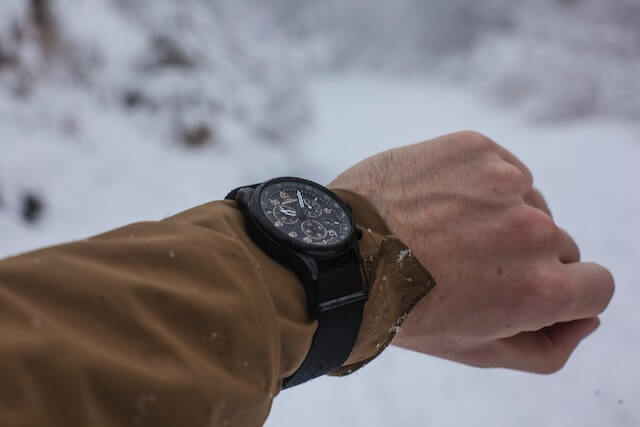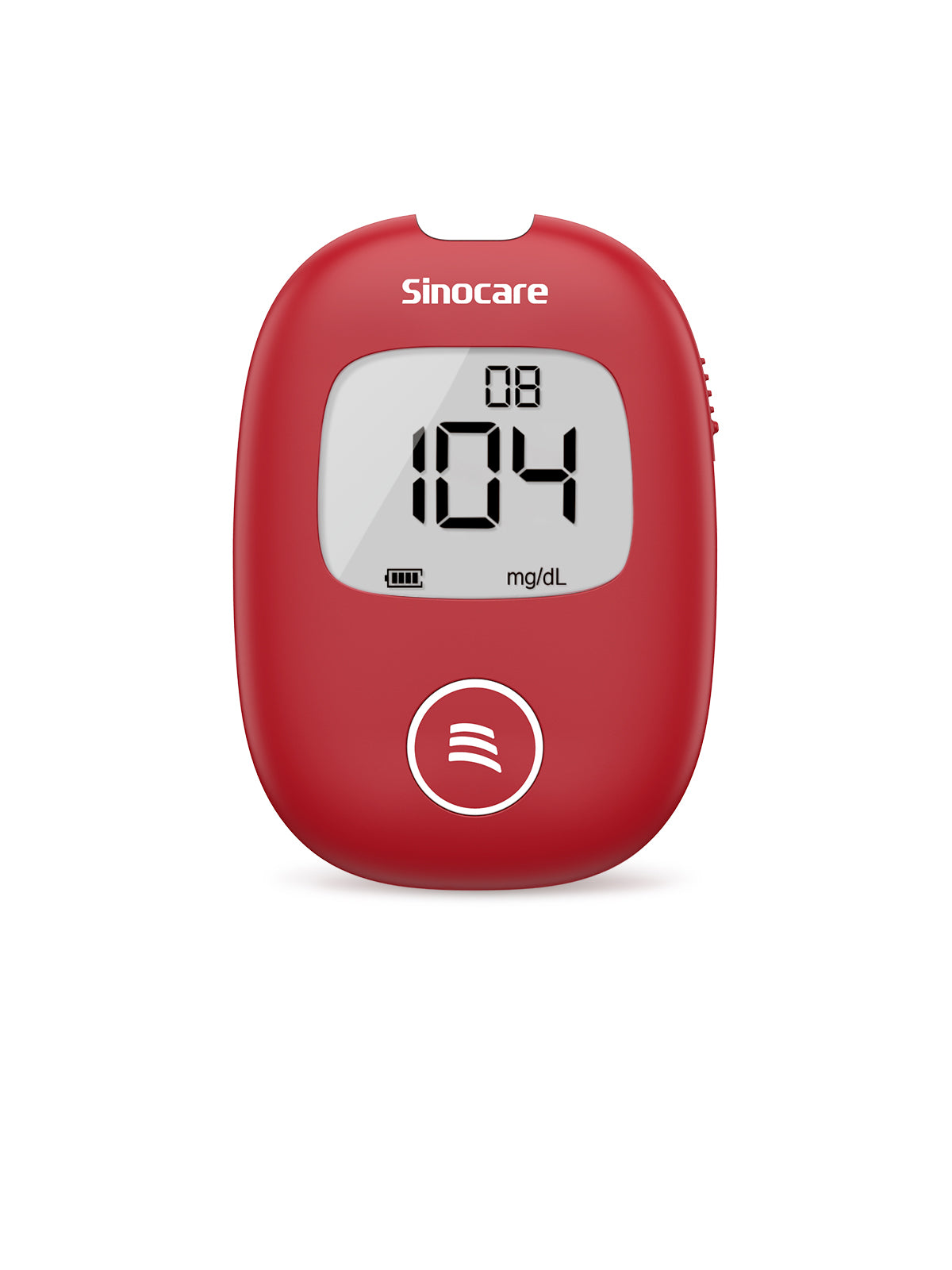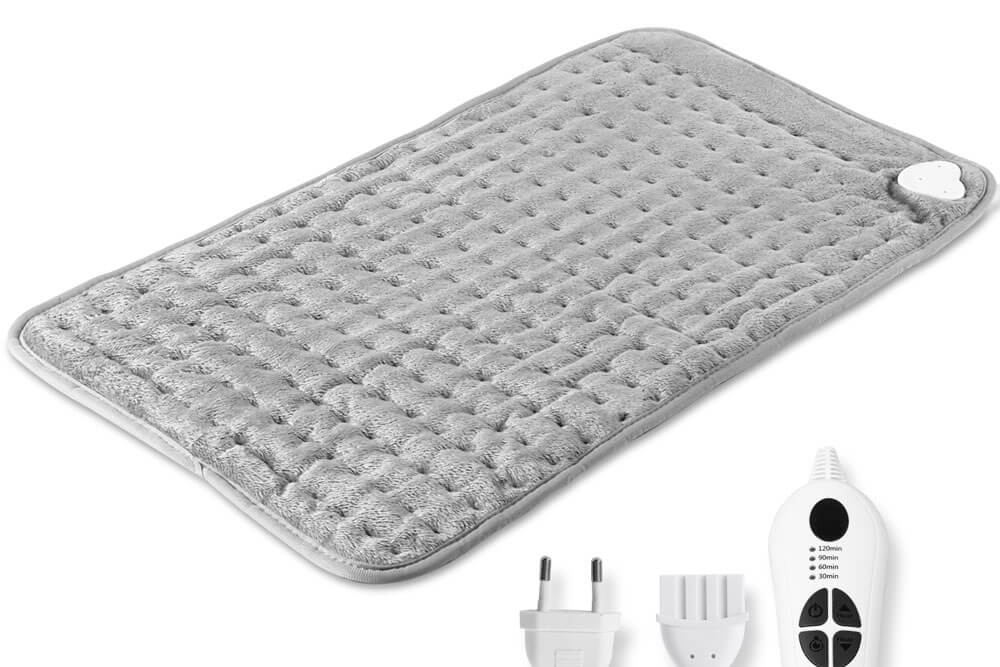Benefits of Using a Heating Pad
Heating pads are a handy and easy-to-use option for relieving body aches, joint pains, muscle cramps, and muscle stiffness. It provides heat therapy which ultimately helps our body to relax, and this heat therapy offers a soothing effect to the region where it is applied. It is usually a part of a doctor's prescription when there is an injury to reduce muscle or joint discomfort. It is an easy-to-use device that can provide instant pain relief, comfort, and warmth in winters.
Why can't Diabetics Use Heating Pads?
The numbness of the hands and feet and the numbness of other parts of the body are common in patients with diabetes. More than half of the patients develop numbness right from the start of diabetes. The numbness in diabetic patients results from nerve damage due to consistently high blood glucose levels. This nerve damage may also result in loss of sensory neuronal sensations, ultimately causing loss of touch and temperature sensation called "HYPOESTHESIA" in medical terminology. So, suppose a diabetic patient uses a heating pad. In that case, there are certain chances of him getting hurt or burnt due to overheating as the nerves which carry temperature sensations to our brain are already damaged because of consistently high blood sugar levels. Hence the nerves may not detect or may cause a delay in the detection of overheating. [1]

It is, therefore, not recommended for diabetics to use heating pads without sufficient knowledge. Overheating by heating pads and burn injuries can further damage the nerve system of diabetic patients, resulting in moderate to severe numbness of the hands and reducing the muscle power of the overheated part of the body. [2]
A straightforward approach to avoiding nerve damage for diabetic patients is controlling blood sugar levels close to the target. Nerve damage or neuropathy can also be managed by taking vitamin B supplements, regular exercise, and prescribed nutrition. The bottom line for controlling nerve damage and associated complications in diabetic patients is "CONTROL YOUR BLOOD SUGAR" if the blood sugar is not maintained in the reference range, all other measures for neuropathy will be of no use. [1][3]
Along with heating pads, electric blankets, hot water bottles, and even extreme hot baths should be used with caution in patients with diabetes. Similarly, precautions should be taken to avoid extreme cold exposure to the skin, which can cause cold burns or cold sores. [4]
Tips to Use a Heating Pad Safely with Diabetes
Don't worry. We will give you some handy tips and tricks so that you can enjoy a relaxing and soothing heating pad session to relieve body pains and heat your body in winter.
- Always place a piece of cloth or towel between the heating pad and your skin.
- Be alert while using heating pads and try to avoid watching movies and using social media while using heating pads.
- Never rely on your body's heat sensation, especially when you have any degree of nerve damage. Always look for changes in skin color. For example, red-colored skin is a sign of over-heating skin and irritation.
- Avoid using heating pads for more than 10 minutes.
- Avoid using high temperatures, i.e., 100°F. 120° F should be reduced as higher temperatures can cause skin burns.
- Never sleep with a plugged-in heating pad and inform someone at your home about your use.
- If you are using a heating pad in winter to warm up your bedding, you may do so well before going to bed and turning the heating pad off after the required warmth.[2]
Optimal Temperature
The recommended range of temperature is 80°F to 100°F. Temperatures greater than 120 can cause dangerous burns.
Use a Heating Pad with a Timer
A reminder or a warning alarm can be helpful to avoid overheating. It will also help you develop the habit of using a heating pad with caution and keep you safe from severe burn injuries.
What to do when burned by a Heating Pad?
Relax if you are a diabetic patient and burnt due to overheating by heating pads. We have got some useful guides for you.
The treatment of the heating pad burns depends on the degree of skin burn. Suppose it is a first-degree or mild burn, then wash the burnt area with cold tap water for about 5-10 minutes, accompanied by washing it with soap. The application of petroleum jelly or aloe Vera can help in relieving pain.
For second-degree and third-degree burns, if more profound layers of skin are affected, immediate washing of that area with cold water, soap, and urgent hospital treatment is recommended. [5]
Can Diabetics get Cold Burns?
Similarly, extreme cold exposures can also damage the skin and cause skin sores. Nerve damage in diabetics can also cause loss of cold sensations in the body; therefore, it can result in cold burns if the skin is exposed to low temperatures for an extended period.
Frequently asked questions
How to Deal with Cold Feet in Diabetes?
Please keep this in your mind that you may feel that your feet are too cold) but this may not be the accurate picture, as your feet may not be as hard as you feel because of the nerve damage (neuropathy). The best and safest way to keep the feet warm for diabetics is using diabetic compression socks or stockings. Regular exercise can improve blood flow, and weight reduction can improve blood sugar controls which will eventually cause improvement in nerve damage and cold sensation of the feet. Moreover, vitamin B supplements taken on your doctor's advice can also reduce nerve damage.
Why are some diabetics feeling hot all the time?
Do you know prolonged diabetes can affect the functionality of sweat glands, causing a delay in body temperature regulation? Therefore, diabetics will feel more heat compared to nondiabetic patients.
Can Diabetes Bathe with Hot Water?
A hot water bath should be taken with great care, and the temperature of the water should not be too high. Moreover, a diabetic patient should not be in hot water for more than 5 minutes as hot water can cause serious burn injuries especially to the feet of diabetic patients. [6]
Final Thoughts
A heating pad is pain relieving, soothing, and relaxing. It has many advantages and can be used in many conditions. Diabetic patients can also enjoy and use heating pads, but they should remain careful and avoid sleeping with electrified heating pads and overheating.
At last, it should be remembered that if a diabetic patient gets a burn injury, it will take a very long time to heal completely and can result in complications. Therefore, please be very careful and consult your doctor before using heating pads, as your doctor may give alternate advice on your pain relief. [7]
References
[1] Diabetic neuropathy- NICE guidelines
https://www.nice.org.uk/guidance/ng28/ifp/chapter/nerve-problems
[2] Why can't diabetics use heating pads?
https://thesoothingeffect.com/why-cant-diabetics-use-heating-pads/
[3] Managing diabetes in heat
https://www.cdc.gov/diabetes/library/features/manage-diabetes-heat.html#:~:text=Did%20you%20know%20that%20people,can't%20cool%20as%20effectively.
[4] Patient education- Diabetic neuropathy https://www.uptodate.com/contents/diabetic-neuropathy-beyond-the-basics
[5] Diabetic complications- BNF guidelines
https://bnf.nice.org.uk/treatment-summaries/diabetic-complications/
[6] Diabetes- https://www.drugs.com/mcf/diabetes-are-electric-blankets-off-limits
[7] Burns in diabetic patients - https://www.ncbi.nlm.nih.gov/pmc/articles/PMC2772003/










Leave a comment
All comments are moderated before being published.
This site is protected by hCaptcha and the hCaptcha Privacy Policy and Terms of Service apply.